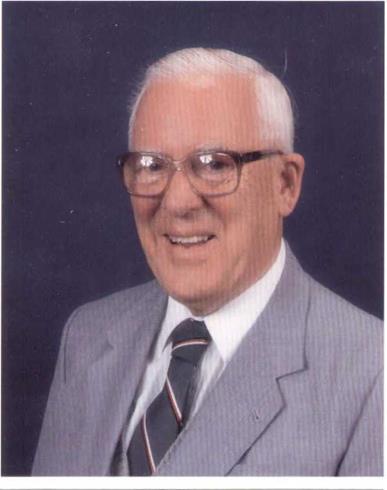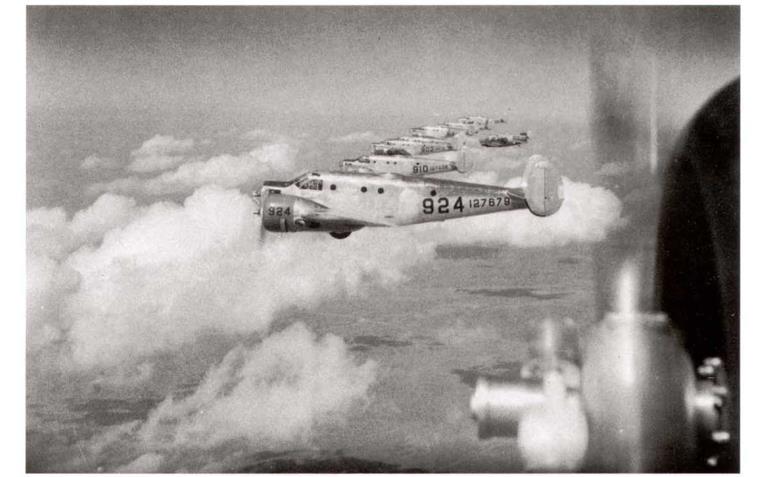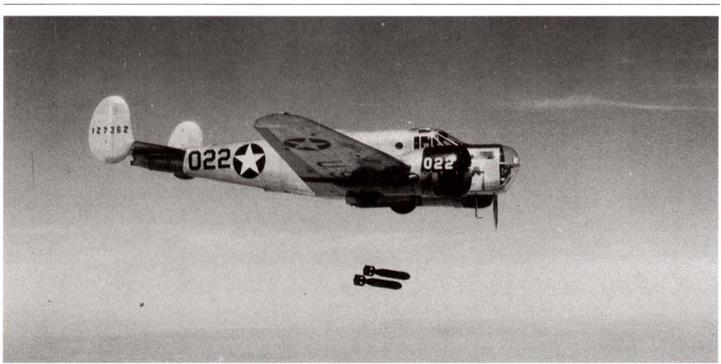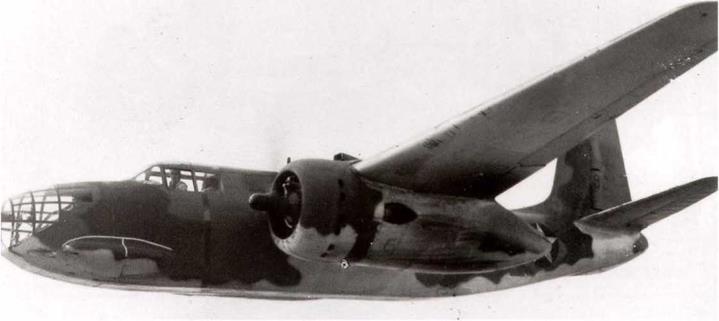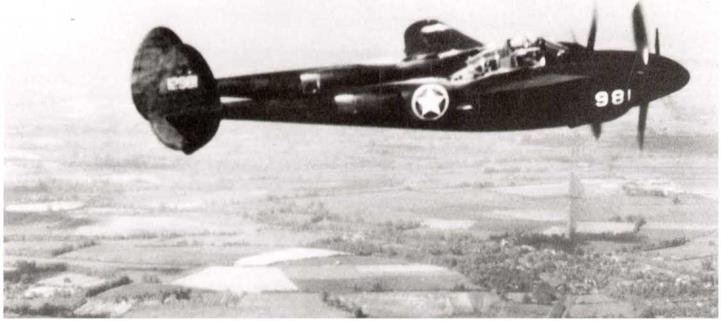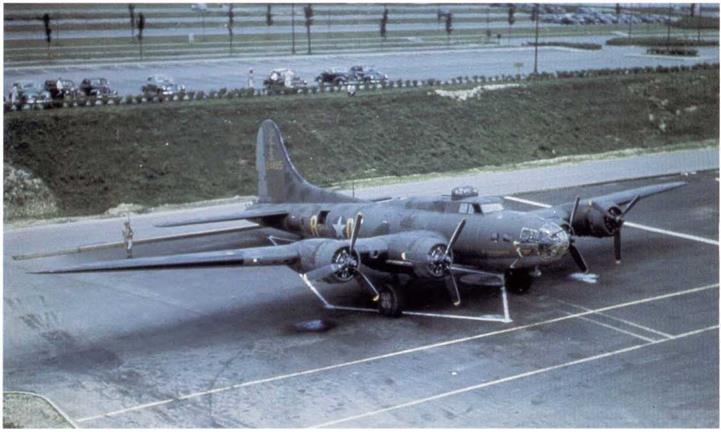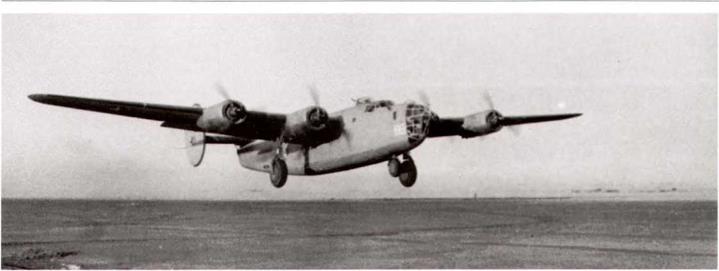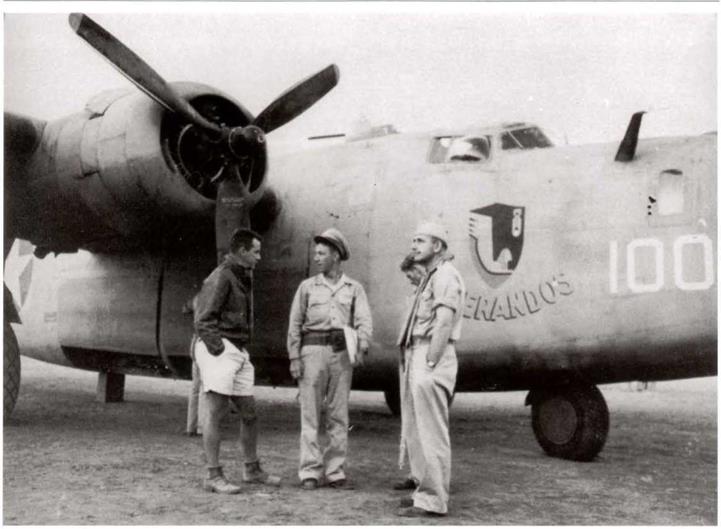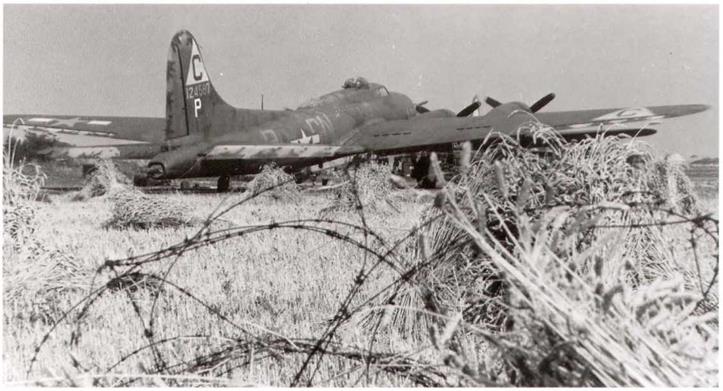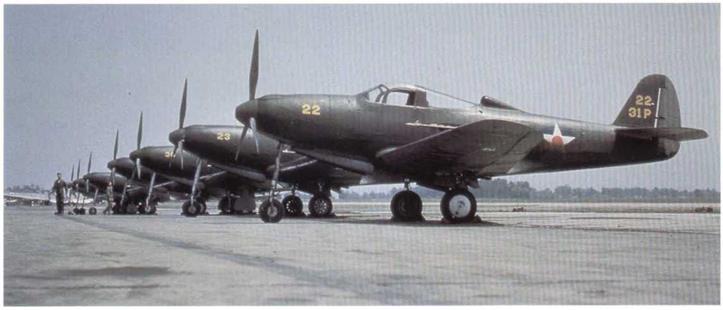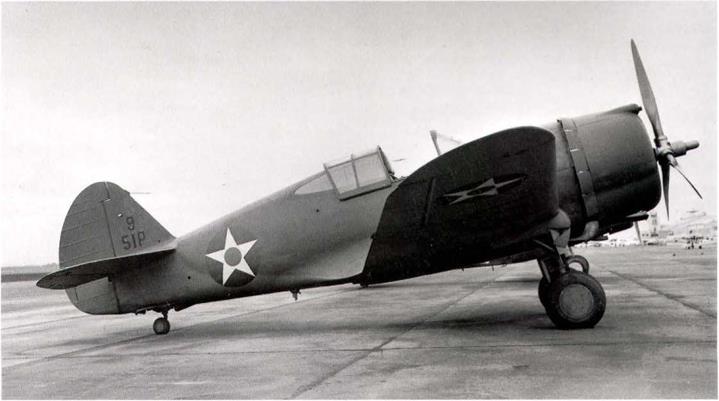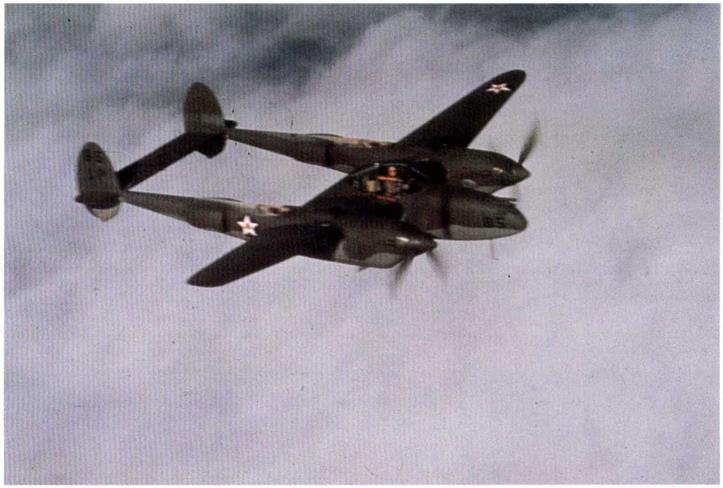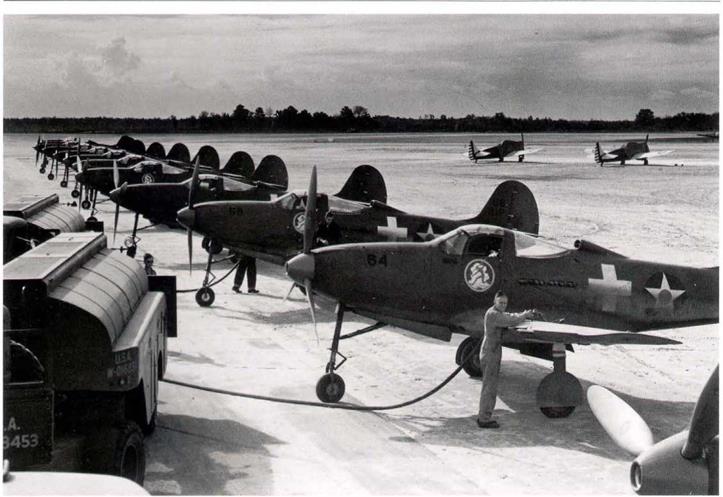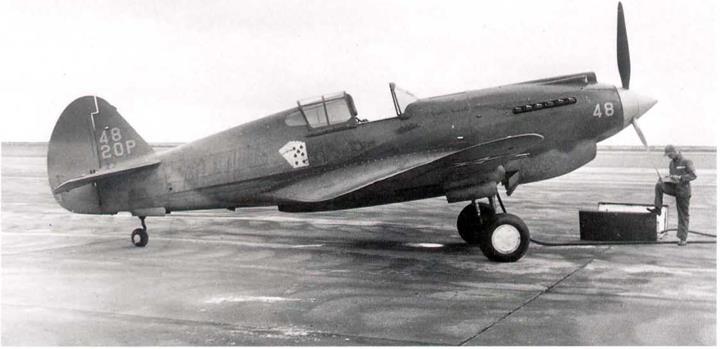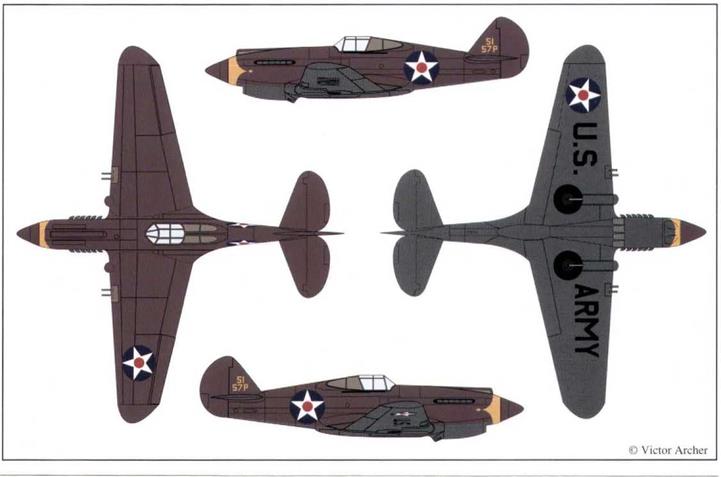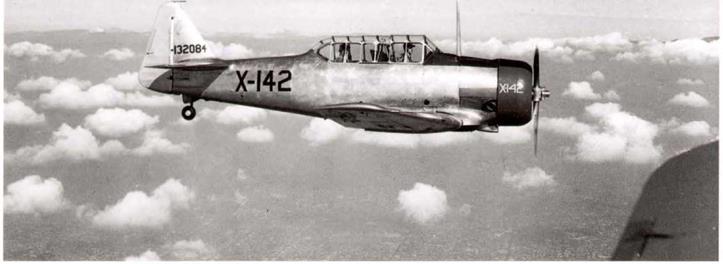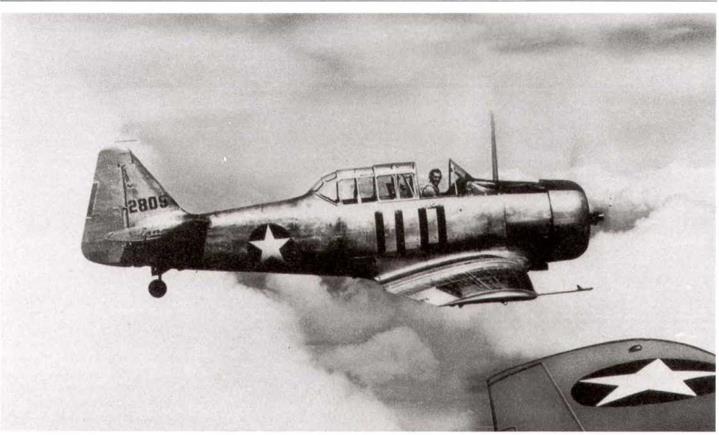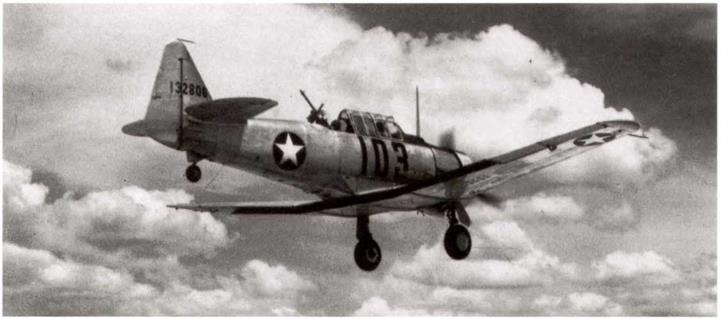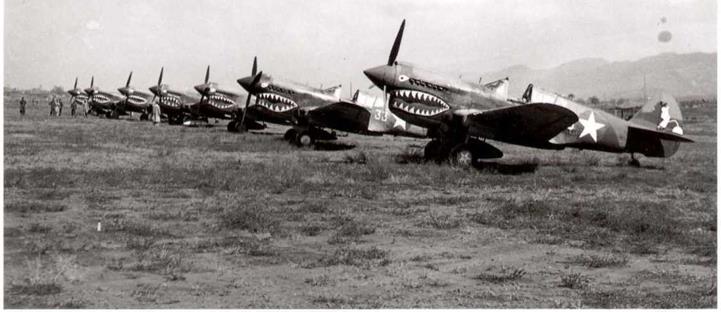New version of the national aircraft insignia spec., AN-I-9c, issued, August 1947
This new issue, dated August 14, 1947, made a number of detail changes to the requirements for the new national aircraft insignia. This included using a gray color for the insignia white on upper wing surfaces when finished in low visibility camouflage color schemes, and deleting the small size national insignia used above the wings of night fighters, enlarging them to a minimum size of thirty inches (from the previous twenty five inches). The spec, read as follows:
A. APPLICATION
A-l. Application.- This specification is drawn to present the requirements for the size and location of the national insignia on the exterior surfaces of aircraft.
B. APPLICABLE SPECIFICATIONS,
B-l. There are no specifications applicable to this specification.
C. MATERIALS.
C-l. General.-The insignia shall be applied with approved lacquers, dopes or enamels as are applicable and compatible with the finishes applied to adjacent surfaces, Decalcomanias may be used upon specific approval of the Procuring Agency. The gloss or specularity shall match that of adjacent surfaces, except that non-specular laquers, dopes or enamels shall be used on surfaces finished semi-gloss sea blue.
C-2. Color.- Colors used shall conform to the applicable Army-Navy standard color cards for non-specular insignia and to the Army-Navy Aeronautical Color Standards for glossy insignia.
D. DESIGN.
D-l. Construction.- The national insignia shall be an insignia white five pointed star inside an insignia blue circumscribed circle with an insignia white rectangle, one radius of the blue circle in length and one-half radius of the blue circle in width, on each side of the star and the top edges placed to form a straight line with the top edges of the two star points beneath the top star point; with an insignia red horizontal stripe centered in the white rectangles at each end of the insignia, the width of the red stripe to be one-sixth the radius of the star; and an insignia blue border one-eighth radius of the blue circle in width outlining the entire design; except that when the insignia is to be applied on a sea blue, dark blue or black background, the insignia blue circumscribed circle and the insignia blue border may be omitted. The construction of the star is obtained by marking off five equidistant points on the circumscribed circle and connecting each point to the two non-adjacent points. See Figure 1. The national insignia shall be applied so that in the normal flight attitude of the airplane the top star point of the insignia points upward and perpendicular to the line of flight on vertical surfaces, or forward and parallel to the line of flight on horizontal surfaces. A gray color, obtained by mixing one part of insignia white with one part of light gray, shall replace the insignia white on applications to upper wing surfaces when finished in low visibility camouflage color schemes.
D-2. Application.- D-2a. Wing Insignia.-
D-2a(l). Location.- Two insignia shall be placed on the wings of all airplanes. The national insignia shall be placed on the upper surface of the left wing and the lower surface of the right wing. On bi-planes one insignia shall be placed on the upper surface of the upper left wing and the other on the lower surface of the lower right wing. They shall be placed at a distance from the wing tip equal to one-third of the distance from the fuselage to the wing tip and tangent to the aileron cut out measured from the center of the insignia. The insignia may be moved inboard the minimum distance necessary where wing tip floats of seaplanes interfere or when space is not available for the minimum size specified.
D-2a(2). Size.- The insignia shall have a blue circle, excluding the borders with a maximum diameter of 50 inches and a minimum diameter of 30 inches. Standard sizes shall have blue circle diameters in multiples of five inches. The blue circle diameter selected shall be the standard size which is closest to, but does not exceed, 75 percent of the distance between the leading edge of the wing and the aileron cut out at the point of application.
D-2b. Fuselage Insignia.
D-2b(l). Location.- The national insignia shall be applied to each side of the fuselage approximately midway between the trailing edge of the wing and leading edge of the stabilizer but in no case shall any part of the insignia be located closer than 35 inches to the trailing edge of the wing, except that the insignia may be moved forward or to the rear of the midpoint to avoid covering transparent material. When the fuselage section between the trailing edge of the wing and the leading edge of the stabilizer is not large enough to accommodate the minimum size specified, the fuselage insignia shall be placed on such other parts of the fuselage, as will permit its being readily seen from the side. On patrol seaplanes, the insignia shall be applied to each side of the bow in such position that it is completely visible when the plane is water-borne in normal load condition. Alternate locations, as permitted above, shall be such as to obtain suitable visibility and shall be approved by the Procuring Agency. Fuselage insignia may extend over doors and emergency exits but shall not extend over windows or such opening used during combat which would change the insignia pattern.
D-2b(2). Size.- The insignia shall have a blue circle, excluding the border, with amaximum diameter of 50 inches and a minimum diameter of 20 inches. Standard sizes shall have blue circle diameters in multiples of five inches. The diameter selected shall be the standard size which comes nearest to, but does not exceed, 75 percent of the height of the projection of the fuselage side at the point of application.
E. NOTES.
E-l. Superseding Data.- This specification supersedes those parts of the current issues of the Bureau of Aeronautics Specification SR-2 and U. S. Army Specification 98-24102, which pertain to aircraft insignia, and Specification AN-I-9b for Army; and Navy aeronautical use.
* * *
This ends the history of the ever-changing AAF requirements for the camouflage, markings and insignia on its combat and non-combat aircraft between 1941 and 1947, until the service finally became independent of the U. S. Army, as the new U. S. Air Force on September 26,1947.
* * *
|
Boeing B-29A-60-BN, 44-62073, and 44-62083, plus B-29A-55-BN, 44-61962, are seen on (heir return from their record-breaking flight from Tokyo, Japan, to Washington, D. C., on August l, 1947. They are in natural metal finish with Jet 622 gloss black finish underneath. The huge black triangle on the vertical tail denotes that they are from the 7th BG, Eighth Air Force, located at Fort Worth Army Air Field (later Carswell AFB). The buzz numbers were in red on the rear fuselage, while the nearest B-29 carries the last four of its serial number in white on the nose. Tail caps are painted in the squadron color (not known, but they appear to be from different squadrons). This marked the end of the AAF and the forming of the new USAF. (March AFB Museum) |












